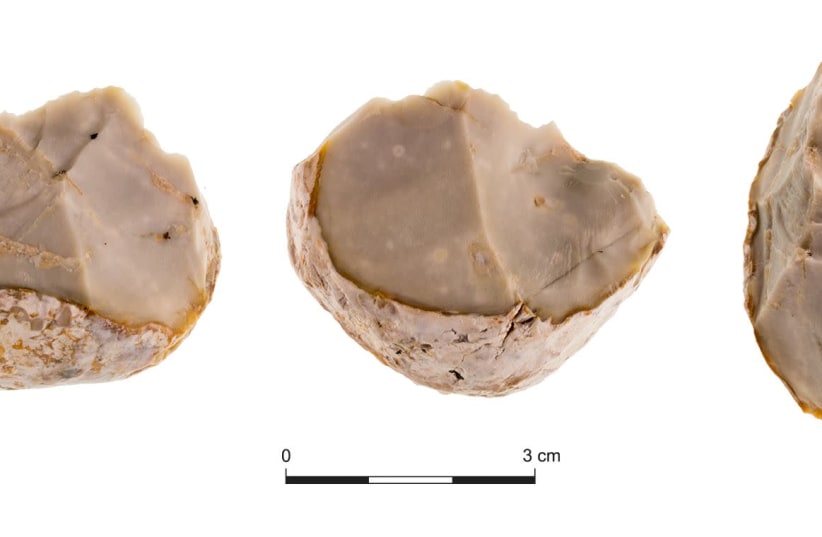Known as “chopping tools,” flint pebbles with one flaked, sharp and massive edge are among the earliest artifacts ever produced. They appeared as early as 2.5 million years ago.
“The chopping tool was invented in Africa about 2.6 million years ago, and then migrated with humans wherever they went over the next two million years,” Prof. Ran Barkai of the Sonia and Marco Nadler Institute of Archaeology at Tel Aviv University explained in a press release. “Large quantities of these tools have been found at almost every prehistoric site throughout the Old World – in Africa, Europe, the Middle East and even China – evidence for their great importance. However, until now, they had never been subjected to methodical lab testing to find out what they were actually used for.”
Barkai conducted the study with his TAU colleague Dr. Aviad Agam, together with Dr. Flavia Venditti from the University of Tübingen and in collaboration with the Laboratory of Technological and Functional Analyses of Prehistoric Artifacts from Sapienza, University of Rome, which also sent researchers.
“For years we have been studying stone tools from prehistoric sites in Israel, in order to understand their functions,” Barkai added. “One important source of tools is Revadim, an open-air site (as opposed to a cave) dating back to 500,000-300,000 years before our time, and rich with remarkably well-preserved findings.”
Located east of Ashdod, Revadim offered highly favorable conditions to ancient humans and was settled over and over again over the millennia.
Researchers have unearthed many artifacts at the site, as well as bones of many types of game, such as elephants, cattle, deer, gazelles and others.
For this study, whose findings were published in the journal PLOS ONE on Wednesday, the team examined 53 samples of chopping tools, including the use-wear traces and the organic residues they carried.
The scholars also manufactured replicas of the tools using flint collected in the area and employed them to break bones of middle-size animals.
According to the scientists, the chopping tools represented a multipurpose toolkit, which can be compared to toolkits of modern tradesmen.
Extracting bone marrow requires breaking the bone with a high degree of precision in order to avoid damaging the marrow, a staple in the prehistoric humans’ diet in light of its nutritiousness, they pointed out.
“The chopping tool, which we examined in this study, was evidently outstandingly popular, because it was easy to make, and highly effective for this purpose,” Barkai explained.
“This is apparently the reason for its enormous distribution over such a long period of time,” he concluded. “The present study has expanded our knowledge of the toolkit of early humans – one more step toward understanding their way of life, tracking their migrations, and unraveling the secrets of human evolution.”
